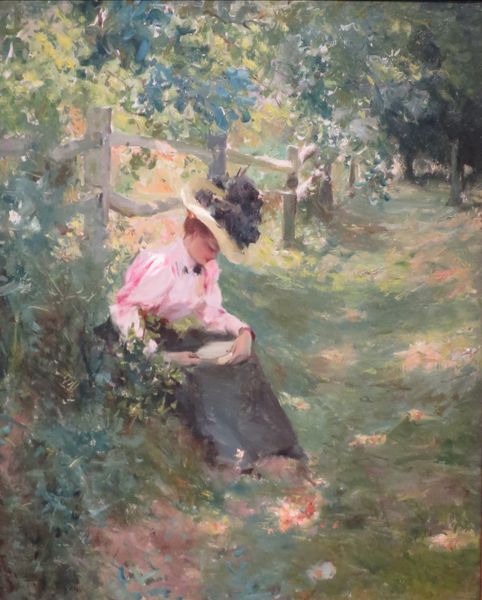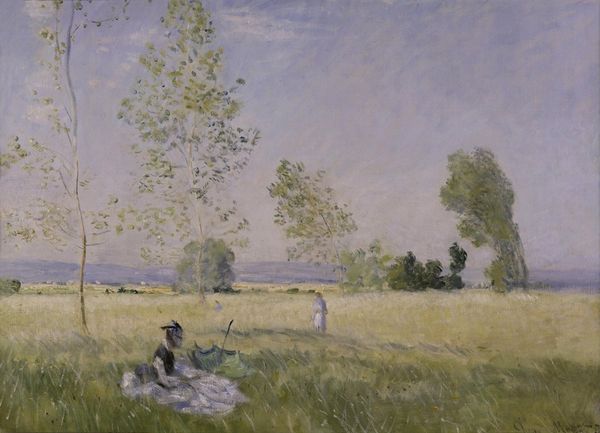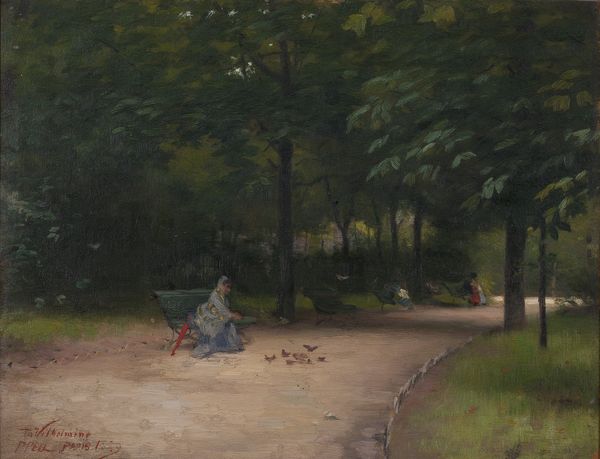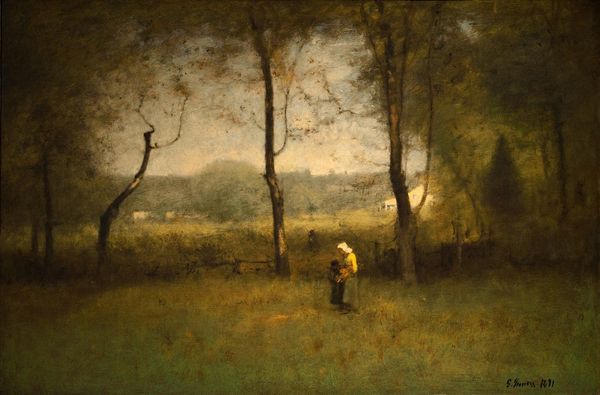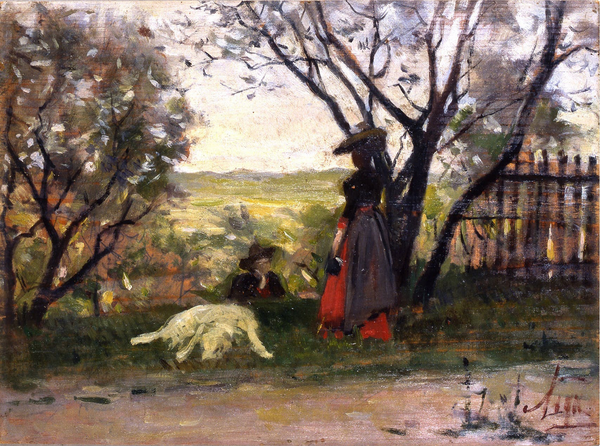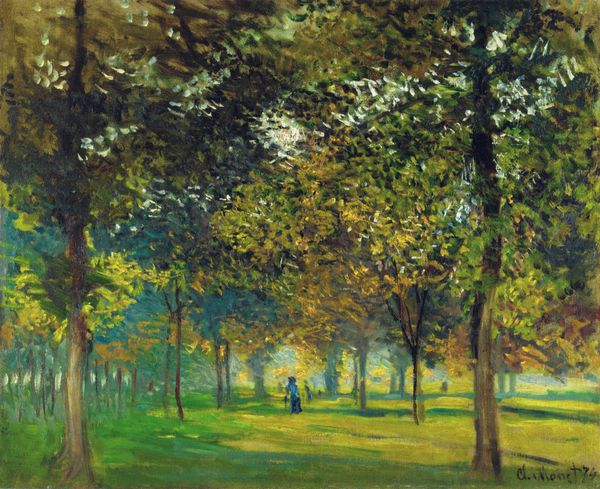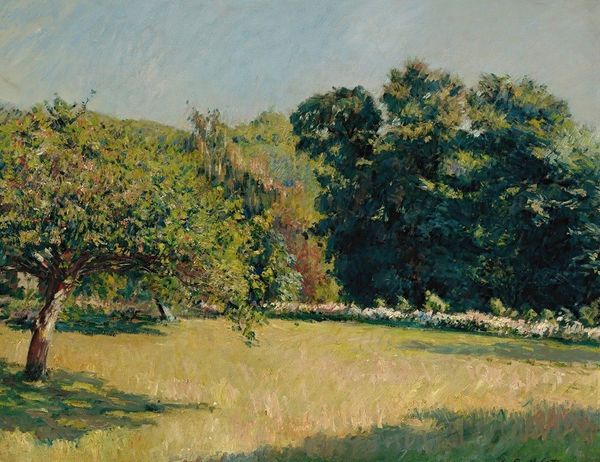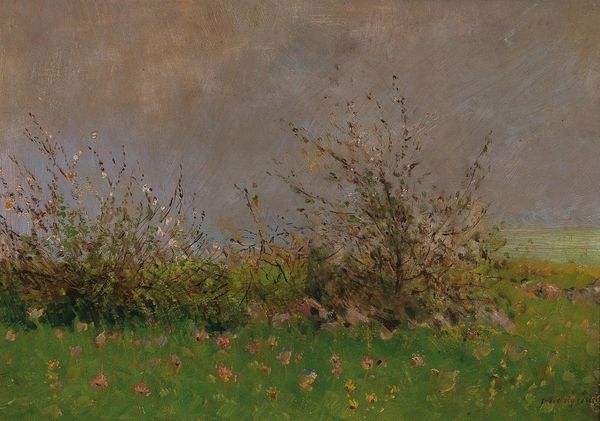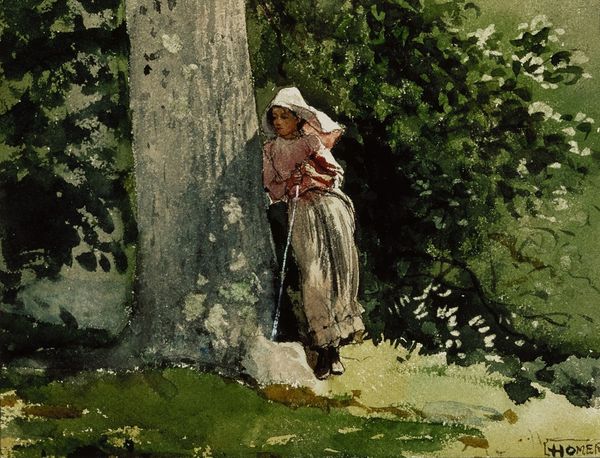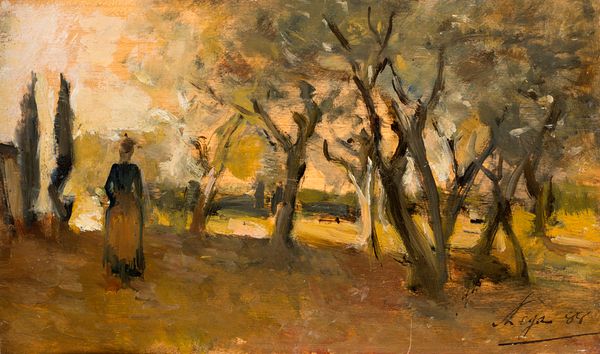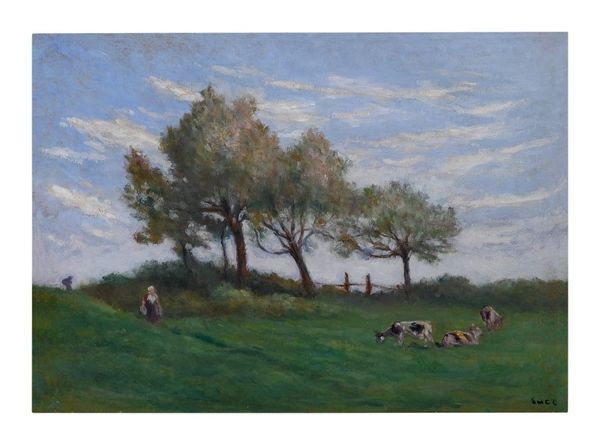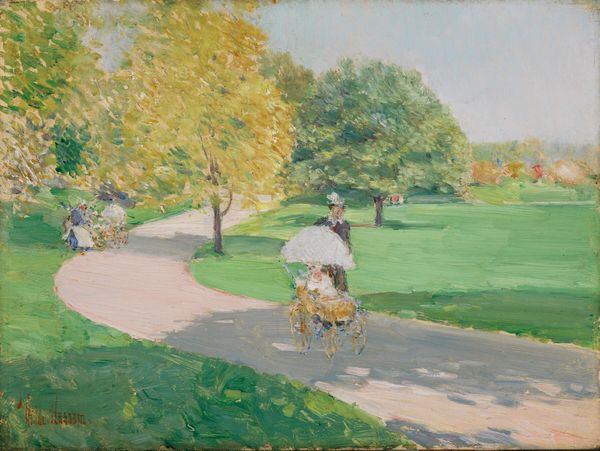
painting, plein-air
#
figurative
#
painting
#
impressionism
#
plein-air
#
landscape
#
figuration
#
nature
#
genre-painting
#
realism
Copyright: Public Domain: Artvee
Curator: This is Winslow Homer’s watercolor, “Girl with Hay Rake,” created in 1878. It’s a wonderfully evocative image. Editor: Immediately, I’m drawn to the materiality of it – the washes, the way the light seems to shimmer on the surface. You can almost feel the dampness of the watercolor paper. Curator: Yes, Homer truly mastered watercolor techniques; note how he captures this archetypal farm girl amidst nature. She is framed in a landscape replete with connotations of simplicity. Does this artwork invoke certain sentimental associations for you? Editor: The hay rake speaks volumes – a tool, obviously, for agricultural work, for transforming the land. You know, looking closely, it seems disproportionately large compared to the figure of the girl; an emblem perhaps of the burden of labor placed upon women in rural society. I wonder about the social context surrounding the image’s creation and distribution… Was it produced for consumption of the urban middle classes? Curator: It's fascinating how the scale of the tool, the rake, informs that. I interpret it as a link to classical pastoral images—simplicity, and virtue through labor. See how she's placed within this carefully rendered, almost idyllic landscape? She seems to embody the spirit of rural America, which resonates with notions of agrarian innocence. The symbolism suggests a longing for an uncomplicated past, one seemingly in harmony with nature. Editor: It could be nostalgia, certainly. I guess I’m just a little suspicious of pastoral tropes… The material conditions – the girl’s clothes, the rake itself – these tell stories beyond simple harmony. Were these scenes available to diverse people across racial and class lines? I always feel compelled to unearth any buried narratives beneath this supposed “innocence." Curator: I agree the realities may have been far more nuanced than what Homer overtly presents here, or what might have been apprehended by consumers. He manages to capture a poignant vision through the image itself. These sorts of artworks allow viewers to explore these connections within art history and material culture, provoking reflections about shifting ideals and cultural constructions. Editor: Exactly! We've both picked apart some complexities behind this watercolor, which has hopefully offered listeners different, compelling avenues to contemplate Homer’s art.
Comments
No comments
Be the first to comment and join the conversation on the ultimate creative platform.

